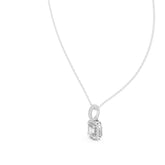The Emerald: A Jewel of Enigmatic Beauty
Introduction: Nature has gifted us with an abundance of precious gemstones, each possessing its own allure and mystique. Among these captivating gems, the emerald stands out as a gemstone that has captivated the hearts of people throughout history. Its lush green color, rarity, and legendary significance have made the emerald a gemstone of immense fascination. In this blog, we delve into the mesmerizing world of emeralds, exploring their origins, characteristics, and cultural significance.
-
Origins and Formation: Emeralds are a variety of the mineral beryl, characterized by their striking green color. They are formed deep within the Earth's crust, where the right combination of elements, including beryllium, aluminum, and chromium, interact over millions of years to create these precious gems. The presence of chromium is responsible for the captivating green hue that sets emeralds apart.
-
Exquisite Green Color: The allure of the emerald lies primarily in its radiant green color. Ranging from a light, vibrant green to a deep, rich forest green, the color variations are vast and intriguing. The intensity of green determines the value of an emerald, with deeper and more vivid greens being highly coveted.
-
Rarity and Value: Emeralds are considered one of the rarest gemstones, making them highly valuable. The combination of their scarcity and their mesmerizing color contributes to their desirability in the world of jewelry. Unlike other gemstones, emeralds often contain natural inclusions, known as "jardin" (French for "garden"), which are considered part of their character and can enhance their beauty.
-
Ancient Legends and Symbolism: Throughout history, emeralds have been adorned with mythical and spiritual significance. Ancient civilizations, such as the Egyptians and the Incas, believed emeralds possessed healing properties and considered them symbols of fertility, rebirth, and prosperity. The emerald was also regarded as a stone of wisdom, enhancing intuition and foresight.
-
Cultural Significance: The emerald holds a special place in various cultures worldwide. It is the birthstone for the month of May, symbolizing renewal and vitality. In many societies, emeralds are cherished as a symbol of love and devotion, often used in engagement rings and other jewelry pieces. Emeralds have adorned the crowns and regalia of royalty and have been cherished by influential figures throughout history.
-
Care and Maintenance: As emeralds are relatively softer compared to other gemstones, they require special care. They are susceptible to scratches and fractures, and exposure to harsh chemicals can damage their luster. It is advisable to clean emeralds gently using mild soapy water and avoid exposing them to extreme temperatures or ultrasonic cleaners.
Conclusion: Emeralds have fascinated mankind for centuries with their exquisite beauty and rich cultural history. As a gemstone of vibrant green hues, rare occurrence, and captivating legends, the emerald continues to inspire awe and admiration. Whether appreciated for their symbolic significance or their aesthetic appeal, emeralds will always hold a special place in the world of gemstones, captivating the hearts of those fortunate enough to behold their mesmerizing beauty.






